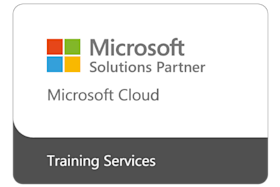Course subjects
Module 1: Installing and configuring domain controllers
This module describes the features of AD DS and how to install domain controllers (DCs). It also covers the considerations for deploying DCs.
Lessons
Lab: Deploying and administering AD DS
Module 2: Managing objects in AD DS
This module describes how to use various techniques to manage objects in AD DS. This includes creating and configuring user, group, and computer objects.
Lessons
Managing user accounts
Managing groups in AD DS
Managing computer objects in AD DS
Using Windows PowerShell for AD DS administration
Implementing and managing OUs
Lab: Managing AD DS objects
Creating and managing groups in AD DS
Creating and configuring user accounts in AD DS
Managing computer objects in AD DS
Lab: Administering AD DS
Module 3: Advanced AD DS infrastructure management
This module describes how to plan and implement an AD DS deployment that includes multiple domains and forests. The module provides an overview of the components in an advanced AD DS deployment, the process of implementing a distributed AD DS environment, and the procedure for configuring AD DS trusts.
Lessons
Lab: Domain and trust management in AD DS
Module 4: Implementing and administering AD DS sites and replication
This module describes how to plan and implement an AD DS deployment that includes multiple locations. The module explains how replication works in a Windows Server 2016 AD DS environment.
Lessons
Lab: Implementing AD DS sites and replication
Modifying the default site
Creating additional sites and subnets
Configuring AD DS replication
Monitoring and troubleshooting AD DS replication
Module 5: Implementing Group Policy
This module describes how to implement a GPO infrastructure. The module provides an overview of the components and technologies that compose the Group Policy framework.
Lessons
Introducing Group Policy
Implementing and administering GPOs
Group Policy scope and Group Policy processing
Troubleshooting the application of GPOs
Lab: Implementing a Group Policy infrastructure
Lab: Troubleshooting Group Policy infrastructure
Verify GPO application
Troubleshooting GPOs
Module 6: Managing user settings with Group Policy
This module describes how to configure Group Policy settings and Group Policy preferences. This includes implementing administrative templates, configuring folder redirection and scripts, and configuring Group Policy preferences.
Lessons
Implementing administrative templates
Configuring Folder Redirection, software installation, and scripts
Configuring Group Policy preferences
Lab: Managing user settings with GPOs
Using administrative templates to manage user settings
Implement settings by using Group Policy preferences
Configuring Folder Redirection
Planning Group Policy (optional)
After completing this module, students will be able to:
Implement administrative templates.
Configure Folder Redirection, software installation, and scripts.
Configure Group Policy preferences.
Module 7: Securing Active Directory Domain Services
This module describes how to configure domain controller security, account security, password security, and Group Managed Service Accounts (gMSA).
Lessons
Securing domain controllers
Implementing account security
Implementing audit authentication
Configuring managed service accounts
Lab: Securing AD DS
Implementing security policies for accounts, passwords, and administrative groups
Deploying and configuring an RODC
Creating and associating a group MSA
Module 8: Deploying and managing AD CS
This module describes how to implement an AD CS deployment. This includes deploying, administering, and troubleshooting CAs.
Lessons
Lab: Deploying and configuring a two-tier CA hierarchy
Module 9: Deploying and managing certificates
This module describes how to deploy and manage certificates in an AD DS environment. This involves deploying and managing certificate templates, managing certificate revocation and recovery, using certificates in a business environment, and implementing smart cards.
Lessons
Deploying and managing certificate templates
Managing certificate deployment, revocation, and recovery
Using certificates in a business environment
Implementing and managing smart cards
Lab: Deploying and using certificates
Configuring certificate templates
Enrolling and using certificates
Configuring and implementing key recovery
Module 10: Implementing and administering AD FS
This module describes AD FS and how to configure AD FS in a single-organisation scenario and in a partner-organisation scenario.
Lessons
Overview of AD FS
AD FS requirements and planning
Deploying and configuring AD FS
Overview of Web Application Proxy
Lab: Implementing AD FS
Configuring AD FS prerequisites
Installing and configuring AD FS
Configuring an internal application for AD
Configuring AD FS for federated business partners
Module 11: Implementing and administering AD RMS
This module describes how to implement an AD RMS deployment. The module provides an overview of AD RMS, explains how to deploy and manage an AD RMS infrastructure, and explains how to configure AD RMS content protection.
Lessons
Lab: Implementing an AD RMS infrastructure
Module 12: Implementing AD DS synchronisation with Microsoft Azure AD
This module describes how to plan and configure directory syncing between Microsoft Azure Active Directory (Azure AD) and on-premises AD DS. The modules describes various sync scenarios, such as Azure AD sync, AD FS and Azure AD, and Azure AD Connect.
Lessons
Planning and preparing for directory synchronisation
Implementing directory synchronisation by using Azure AD Connect
Managing identities with directory synchronisation
Lab: Configuring directory synchronisation
Preparing for directory synchronisation
Configuring directory synchronisation
Managing Active Directory users and groups
Module 13: Monitoring, managing, and recovering AD DS
This module describes how to monitor, manage, and maintain AD DS to help achieve high availability of AD DS.
Lessons
Lab: Recovering objects in AD DS


